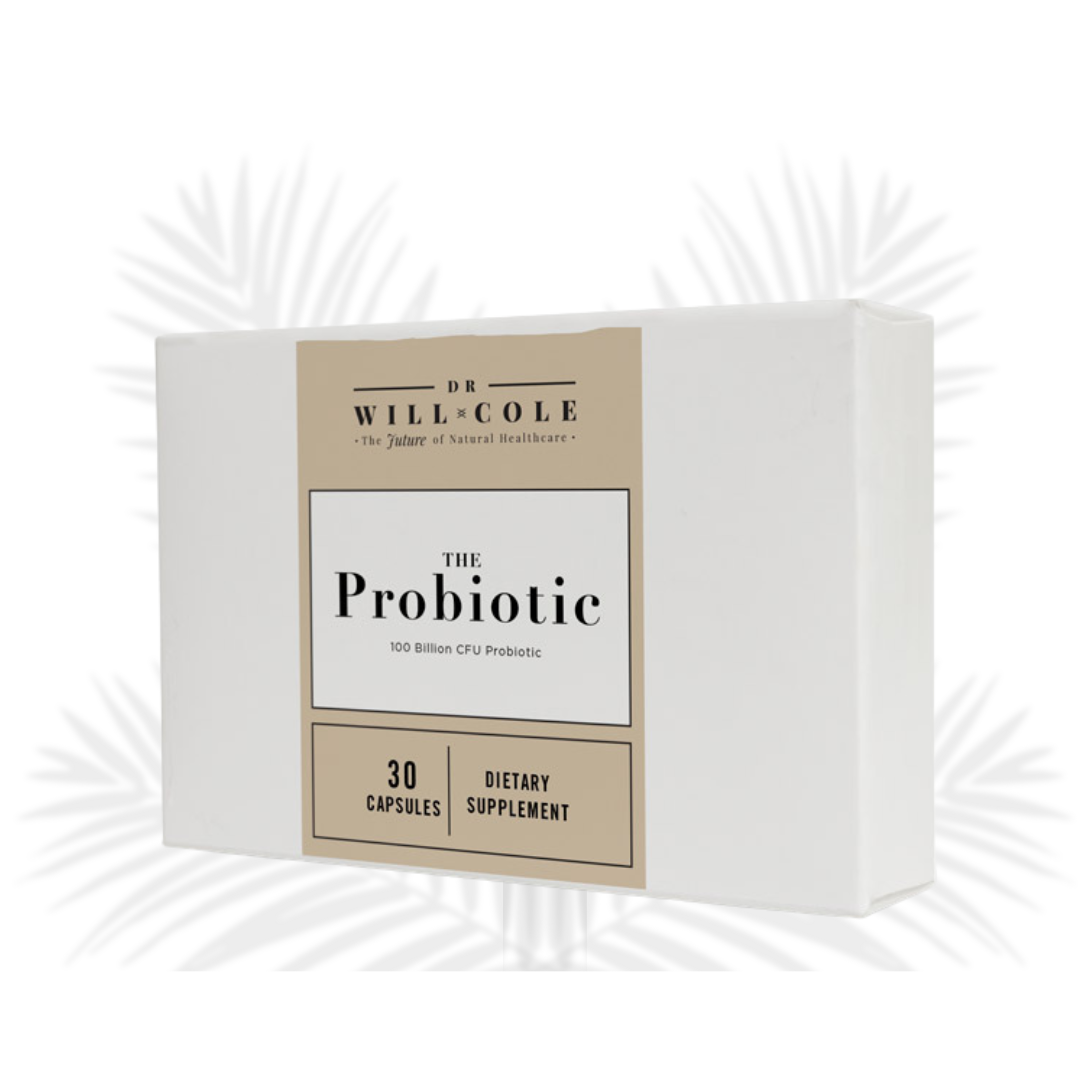What Are FODMAPs? A Functional Medicine Guide To This Food Intolerance

Food is medicine, but it can also be one of the biggest contributors to chronic health problems. Much of your individual body’s reactions to the foods you eat come from your unique biochemistry, microbiome configuration, lifestyle, stress level, and immune status.
As a functional medicine expert, I have seen the healthiest foods flare up symptoms in one person, contributing to inflammation in their muscles and joints, digestive problems, and brain fog, while the next person can thrive on those same foods. Welcome to the world of food intolerances.
FODMAPs are one of the most common food intolerances I see, yet they are also one of the most misunderstood. Consisting of many foods that most people would consider to be “healthy”, this intolerance can be difficult to pinpoint and even more difficult to navigate without the proper guidance. So without further ado, here’s everything you need to know about FODMAPs, and what to do if you have a FODMAP intolerance.
ARTICLE CONTINUES BELOW
Make Your Life a Cleanse
SUBSCRIBER-ONLY GUIDES FOR GUT HEALTH, VIBRANT ENERGY, HEALTHY FOOD & CLEAN ALCOHOL
Get FREE access to these + giveaways, recipes, & discount codes in personal emails from Dr. Will Cole.
What are FODMAPs?
This strange sounding acronym stands for Fermentable Oligosaccharides, Disaccharides, Monosaccharides, and Polyols. In short: fermentable sugars. While these short-chain sugars are typically grouped together, each one is found individually in certain foods.
- Oligosaccharides: These include fructans and galacto-oligosaccharides (GOS), found in foods like wheat, rye, onions, garlic, legumes, and certain fruits.
- Disaccharides: Lactose, a common disaccharide found in dairy products like milk, yogurt, and soft cheeses, falls under this category.
- Monosaccharides: Fructose, a type of sugar present in honey, many fruits, and high-fructose corn syrup, is the primary monosaccharide.
- Polyols: These sugar alcohols include sorbitol, mannitol, xylitol, and maltitol, often found in some fruits like apples, pears, stone fruits, and artificial sweeteners.
FODMAPs are not fully digested in your gut, which can cause them to be excessively fermented by your gut bacteria. When this happens the fermentation releases hydrogen gas, leading to distension of the intestines and a range of uncomfortable IBS-related symptoms, including:
- Stomach pains
- Gas
- Bloating
- Constipation
- Diarrhea
This is considered a FODMAP intolerance, and tends to be related to functional issues like small intestinal bacterial overgrowth (SIBO).
How to diagnose a FODMAP intolerance
There is no single test to diagnose a FODMAP intolerance however, people with SIBO and other chronic gut problems like IBS are more likely to have trouble with FODMAPs. Since functional medicine understands that food intolerances are often a result of underlying gut dysfunction problems like these, I like to run specific gut health labs to get a better understanding of the driving force behind your FODMAP intolerance and how to best address healing. Here are the just a few of the labs that I run for patients at my telehealth functional medicine clinic:
- Microbiome labs: This will show you whether or not you have a bacterial imbalance and if you need to boost your good bacteria. Research has shown that imbalances can dysregulate the immune system and contribute to food intolerance.
- Small intestinal bacterial overgrowth: SIBO occurs when bacteria overgrows up from the large intestines into the small intestines. This bacteria ends up eating the foods you eat and will ferment in the wrong area leading to gas, bloating, and if untreated, leaky gut syndrome.
- Leaky gut labs: These blood tests will measure antibody levels to show if there has been damage to the gut lining.
- Zonulin and occludin: These two proteins control gut permeability. Antibodies indicate damage to intestinal tight junctions.
- Actomyosin: This shows if there has been destruction of gut lining.
- Lipopolysaccharides: Antibodies to these bacterial endotoxins in your gut can indicate leaky gut syndrome.
If your results indicate that there is some gut dysfunction going on, the next step to determine for sure whether or not FODMAPs are an issue for you is to go on a low-FODMAP diet. This is the gold-standard when it comes to identifying FODMAP intolerances.
READ NEXT: Think You Have A Food Intolerance? Symptoms, Diagnosis, And Healing
What is a Low-FODMAP diet?
A low-FODMAP diet is a three-step process that involves the elimination of high-FODMAP foods and includes a reintroduction phase.
1. Elimination phase
During this initial phase, high-FODMAP foods such as certain fruits, vegetables, grains, dairy products, sweeteners, and legumes are eliminated from your diet. Instead, you’ll opt for low-FODMAP alternatives. This can last anywhere between 2-6 weeks depending on your specific health case.
2. Reintroduction phase
Once your symptoms have subsided, it is time to move on to the reintroduction phase. During this phase, high-FODMAP foods are gradually reintroduced to help you identify the specific FODMAP foods that trigger your symptoms. By reintroducing high-FODMAP foods one at a time in small amounts, you’ll be able to better monitor your body’s reaction to each food.
3. Personalization phase
Based on your reactions during the reintroduction phase, you’ll be able to personalize a long-term diet plan. Since you now understand what foods your body loves and which ones cause a reaction, you’ll be able to eat with confidence knowing what high-FODMAP foods are ok for you to consume (if any) and how much you can have in one sitting.
It’s important to note that for some people, the elimination phase will have to be a lot longer than the suggested 2-6 weeks. As I mentioned earlier, since food intolerances are often caused by gut dysfunction, it can take much longer (anywhere between 12-24 months) to see sustainable healing from these gut problems and before you may be able to introduce more moderate to high-FODMAP foods into your diet.
This is why it is so important to simultaneously work on healing your gut during the elimination phase of this diet with probiotics, soothing food medicines, and other healing tools. You can eliminate foods all you want, but if you aren’t addressing the source of your FODMAP intolerance, you’ll never even get the chance to reintroduce certain FODMAP foods with success.
High FODMAP foods
Researchers at Monash University first developed the Low-FODMAP diet and have been on a mission ever since to help individuals navigate the world of FODMAP intolerance by putting together a list of the foods highest in FODMAPs:
- Vegetables: Artichoke, garlic, leek, onion, spring onion, mushrooms, cauliflower and snow peas
- Fruits: Apples, pears, mangoes, cherries, figs, nashi pears, pears, watermelon and dried fruit
- Dairy and alternatives: Cow’s milk, custard, evaporated milk, ice cream, soy milk (made from whole soybeans), sweetened condensed milk, yogurt
- Protein sources: Most legumes, some marinated meats/poultry/seafood, some processed meats
- Grains: Wheat/rye/barley based breads, breakfast cereals, biscuits, and snack products
- Nuts and seeds: Cashews, pistachios
Low FODMAP foods
In addition to the list of high-FODMAP foods, they have also put together a list of low-FODMAP foods that you can reference back to if you are needing a quick refresher on foods that won’t irritate you.
- Vegetables: Aubergine/eggplant, green beans, bok choy, green bell pepper, carrot, cucumber, lettuce, potato, zucchini
- Fruits: Cantaloupe, kiwi fruit, mandarin, orange, pineapple
- Dairy and alternatives: Almond milk, brie/camembert cheese, feta cheese, hard cheeses, lactose-free milk, soy milk
- Protein: Eggs, firm tofu, plain cooked meats/poultry/seafood, tempeh
- Breads and cereals: Corn flakes, oats, quinoa flakes, quinoa/rice/corn pasta, rice cakes (plain), sourdough spelt bread, wheat/rye/barley-free breads
- Sweeteners: Dark chocolate, maple syrup, rice malt syrup, table sugar
- Nuts and seeds: Macadamias, peanuts, pumpkin seeds/pepitas, walnuts
Monash University has a variety of other resources including a helpful app that includes a complete list of high and low-FODMAP foods, recipes, and a digital guide to the FODMAP diet so you are never in a situation wondering where a certain food stands on the FODMAP scale and whether or not you are able to eat something.
Seeking help from a functional medicine expert
If you think a FODMAP intolerance is a factor in your health case, I encourage you to seek out the help of a qualified practitioner. While starting a low-FODMAP diet is a great first step, a functional medicine practitioner can help you identify what’s really going on beneath the surface.
In my telehealth functional medicine clinic, we specialize in helping people overcome chronic gut problems and food intolerances by pinpointing the root cause and tailoring treatment plans according to your unique biochemistry. If you are ready to learn more about how we can help you heal from gut dysfunction and find food freedom, schedule a telehealth consultation today.
As one of the first functional medicine telehealth clinics in the world, we provide webcam health consultations for people around the globe.
Photo: unsplash.com
Start Your Health Journey Today
FUNCTIONAL MEDICINE CONSULTATIONS FOR PEOPLE AROUND THE WORLD
- Jamshed, Humaira et al. “Early Time-Restricted Feeding Improves 24-Hour Glucose Levels and Affects Markers of the Circadian Clock, Aging, and Autophagy in Humans.” Nutrients vol. 11,6 1234. 30 May. 2019, doi:10.3390/nu11061234
- Mooren, Frank C, and Karsten Krüger. “Exercise, Autophagy, and Apoptosis.” Progress in molecular biology and translational science vol. 135 (2015): 407-22. doi:10.1016/bs.pmbts.2015.07.023
- Kathrin Pallauf, Gerald Rimbach, Autophagy, polyphenols and healthy ageing, Ageing Research Reviews, Volume 12, Issue 1, 2013, Pages 237-252, ISSN 1568-1637, https://doi.org/10.1016/j.arr.2012.03.008.
The information on this website has not been evaluated by the Food & Drug Administration or any other medical body. We do not aim to diagnose, treat, cure or prevent any illness or disease. Information is shared for educational purposes only. You must consult your doctor before acting on any content on this website, especially if you are pregnant, nursing, taking medication, or have a medical condition.
Our content may include products that have been independently chosen and recommended by Dr. Will Cole and our editors. If you purchase something mentioned in this article, we may earn a small commission.

BY DR. WILL COLE
Dr. Will Cole, DNM, IFMCP, DC is a leading functional medicine expert who consults people around the globe, starting one of the first functional medicine telehealth centers in the world. Named one of the top 50 functional and integrative doctors in the nation, Dr. Will Cole provides a functional medicine approach for thyroid issues, autoimmune conditions, hormonal imbalances, digestive disorders, and brain problems. He is also the host of the popular The Art of Being Well podcast and the New York Times bestselling author of Intuitive Fasting, Ketotarian, Gut Feelings, and The Inflammation Spectrum.

Gut Feelings
Healing The Shame-Fueled Relationship
Between What You Eat And How You Feel




